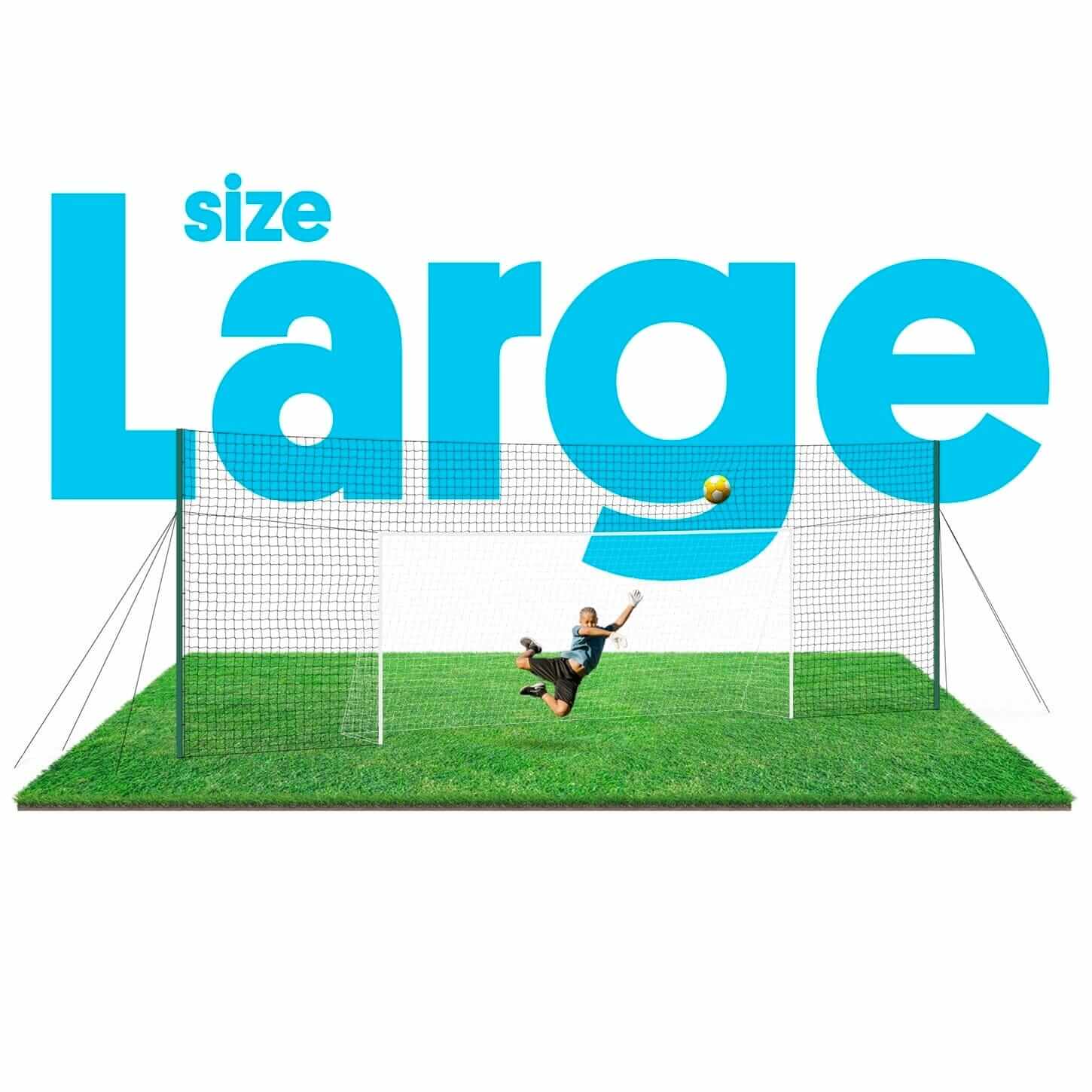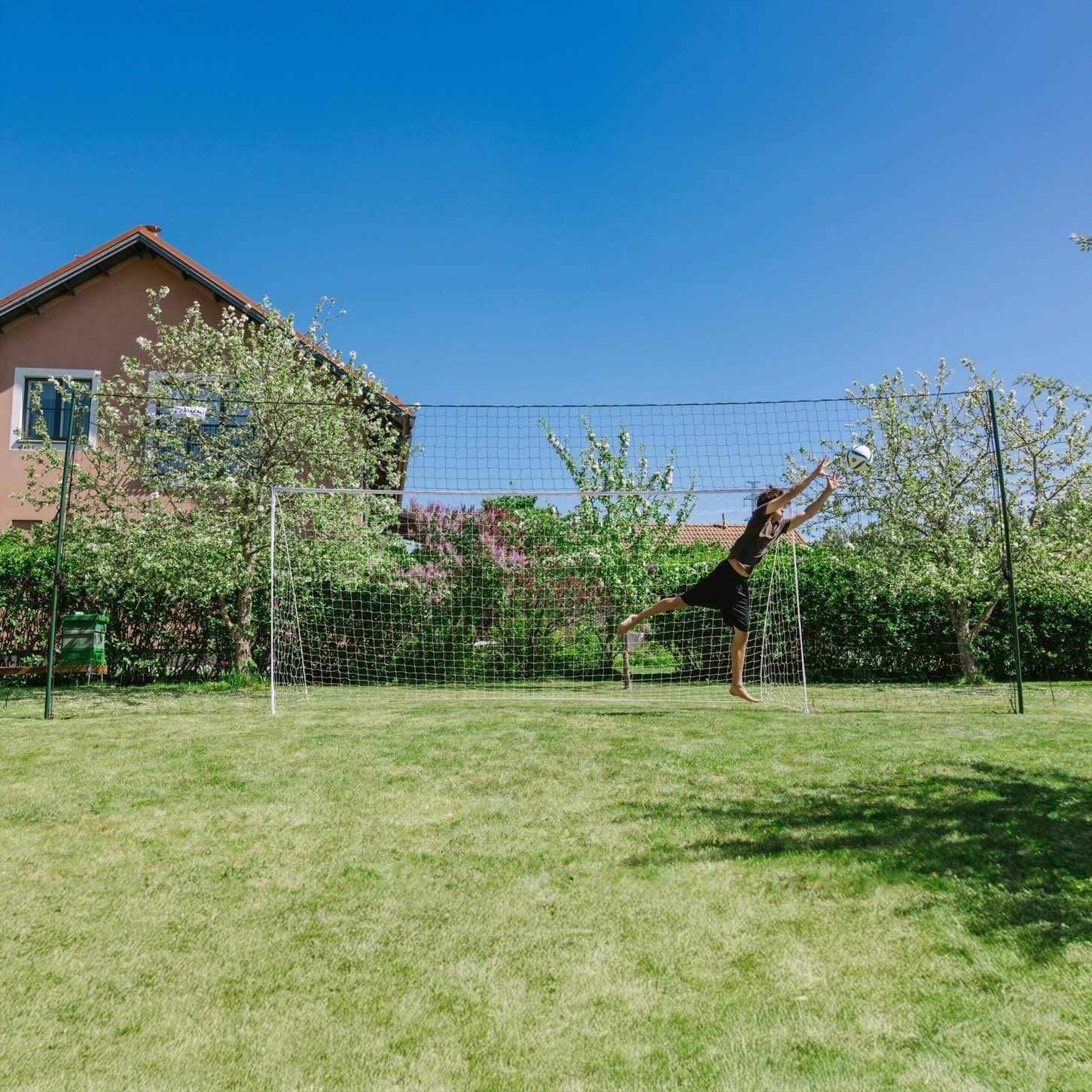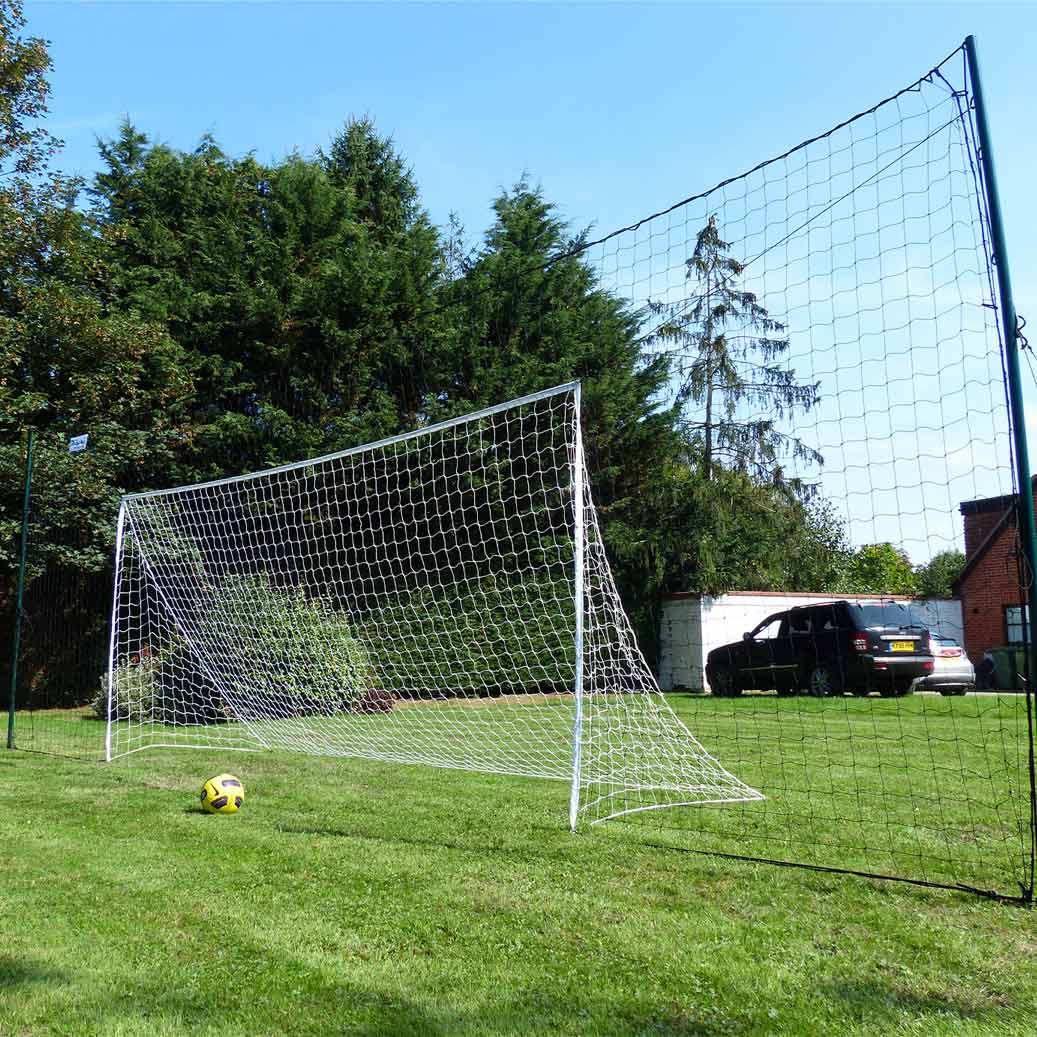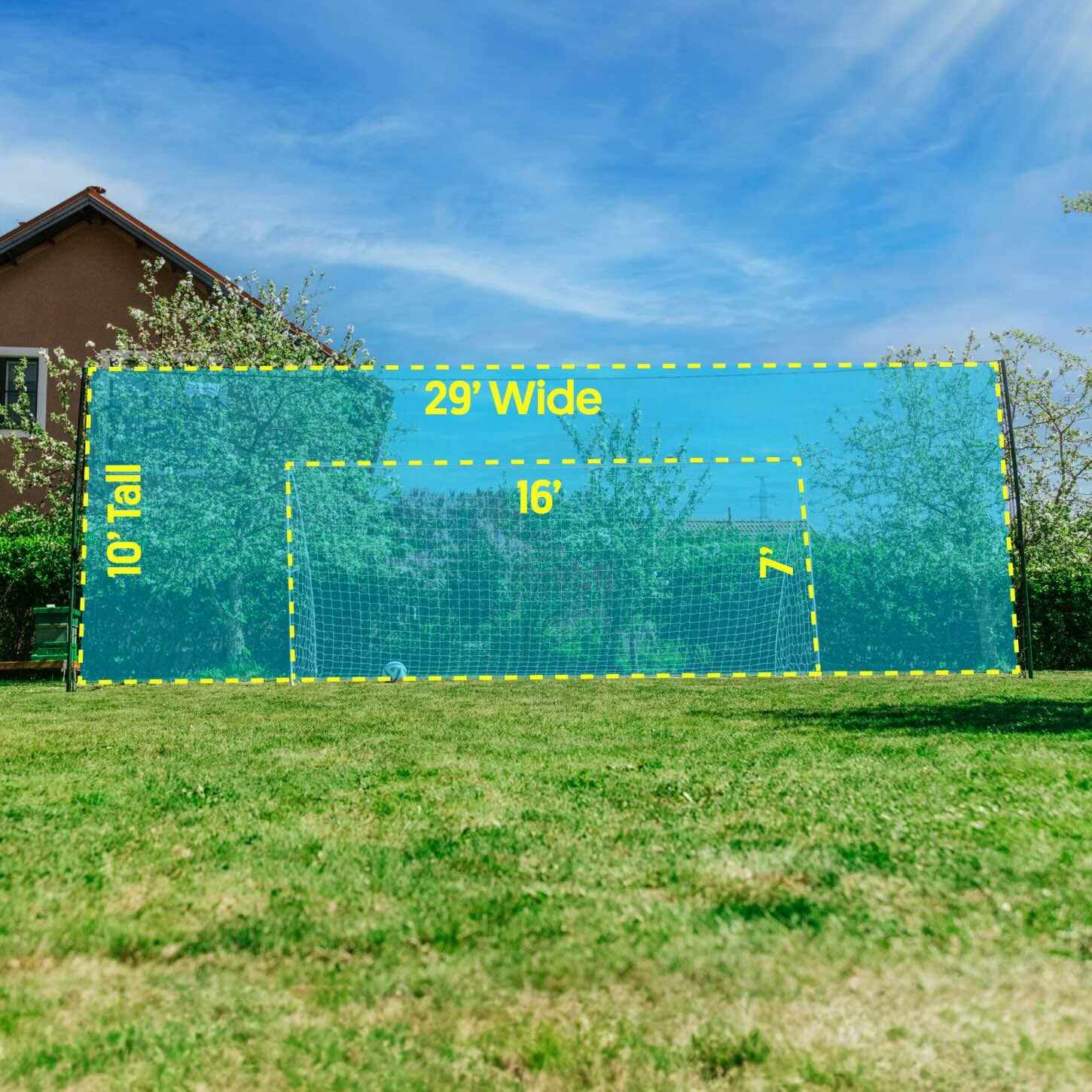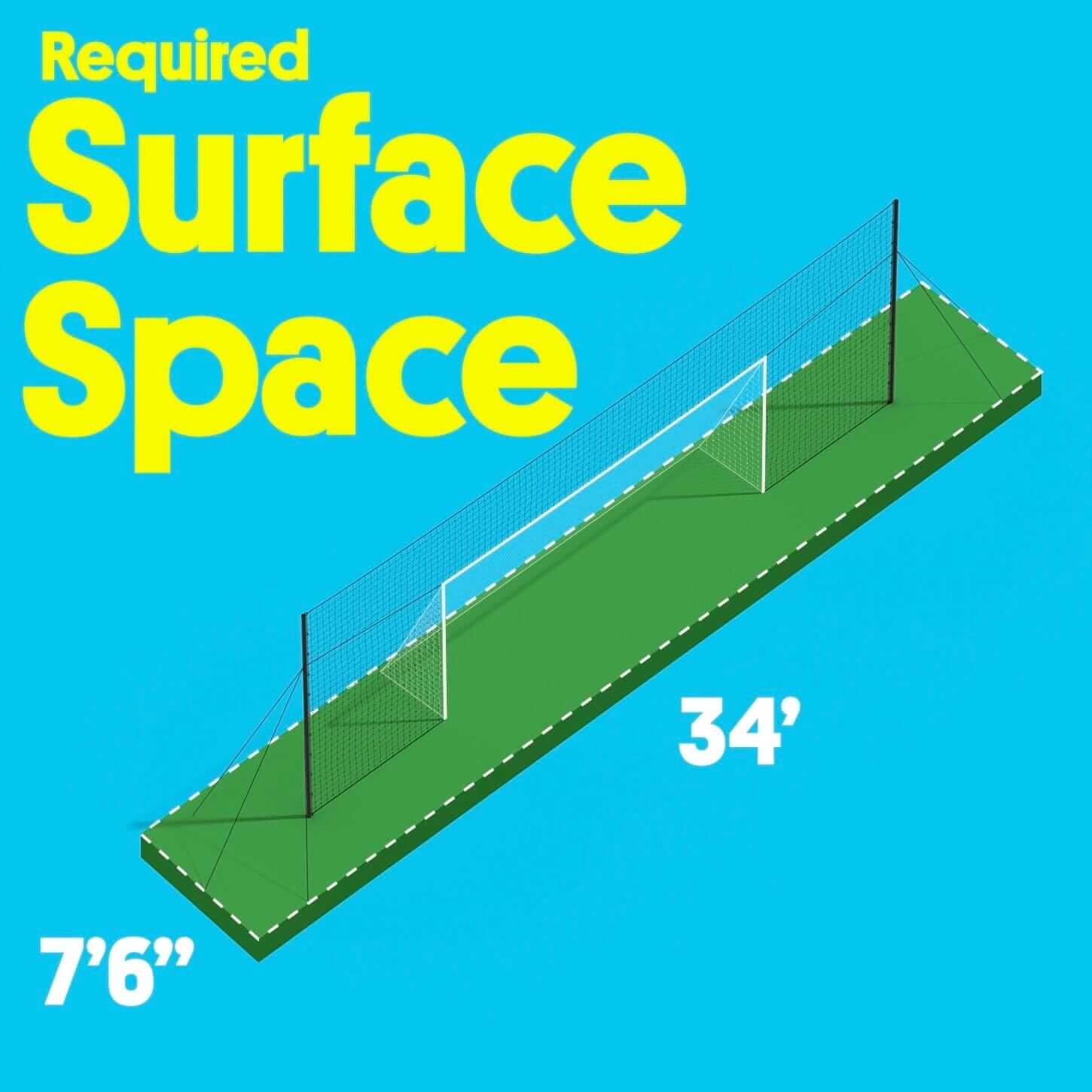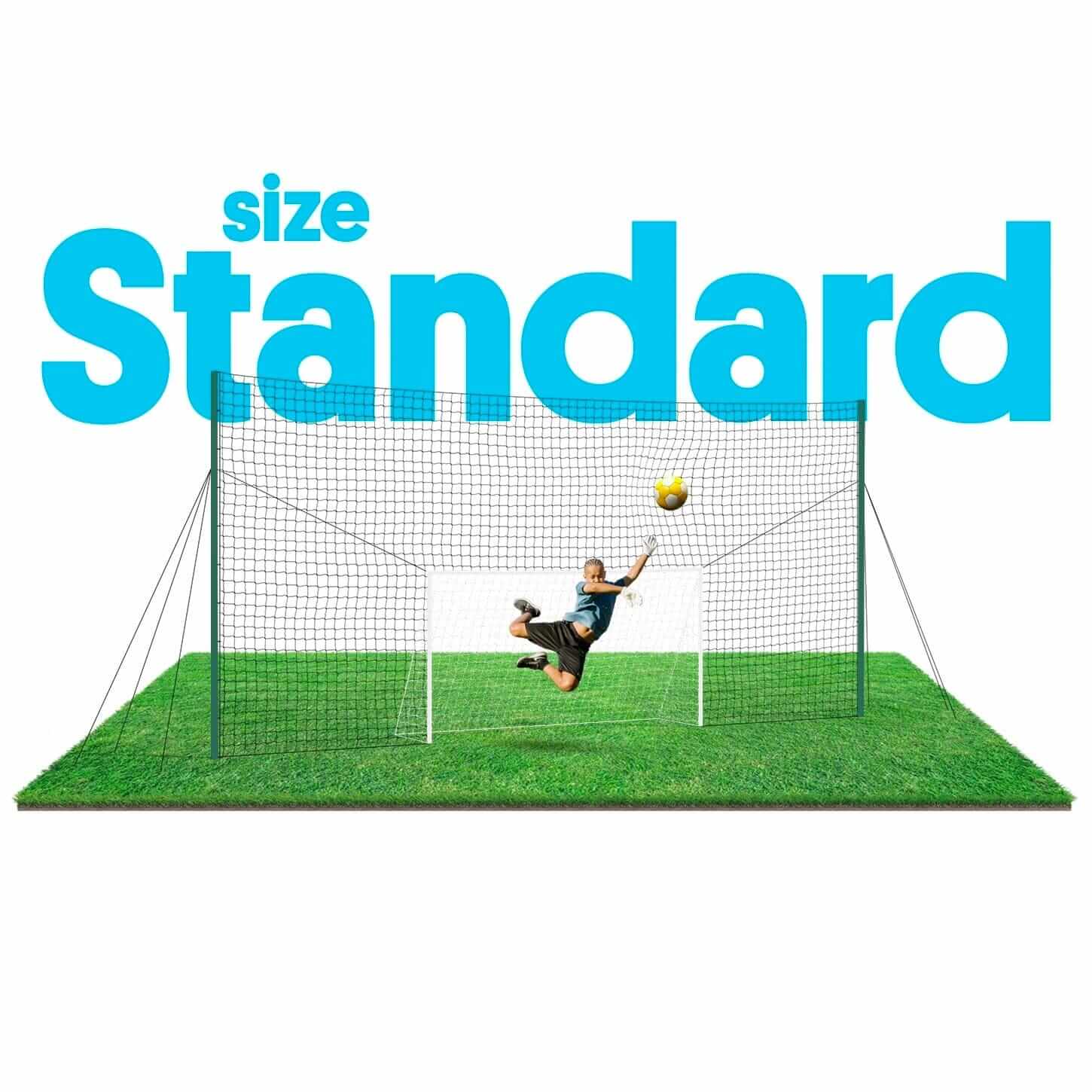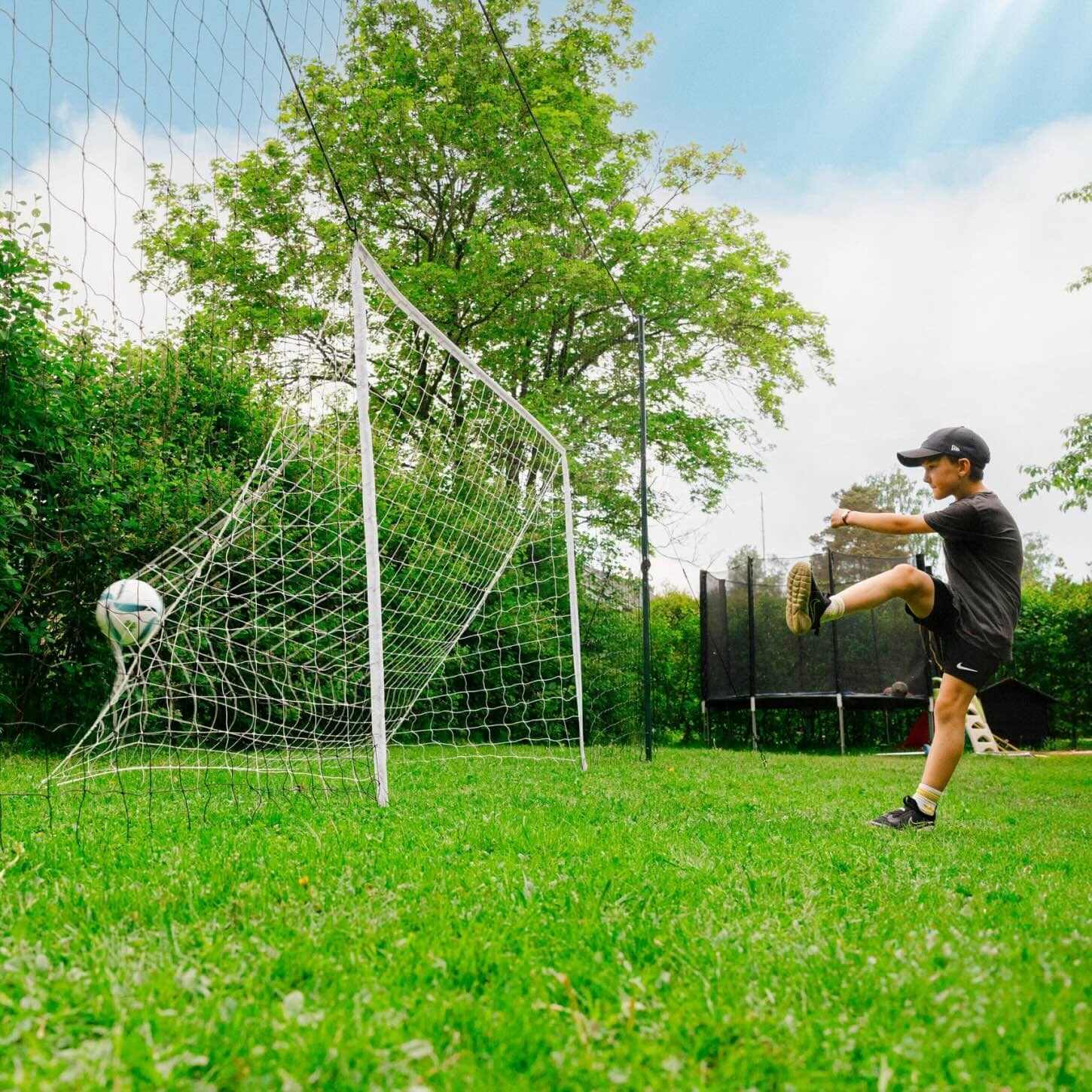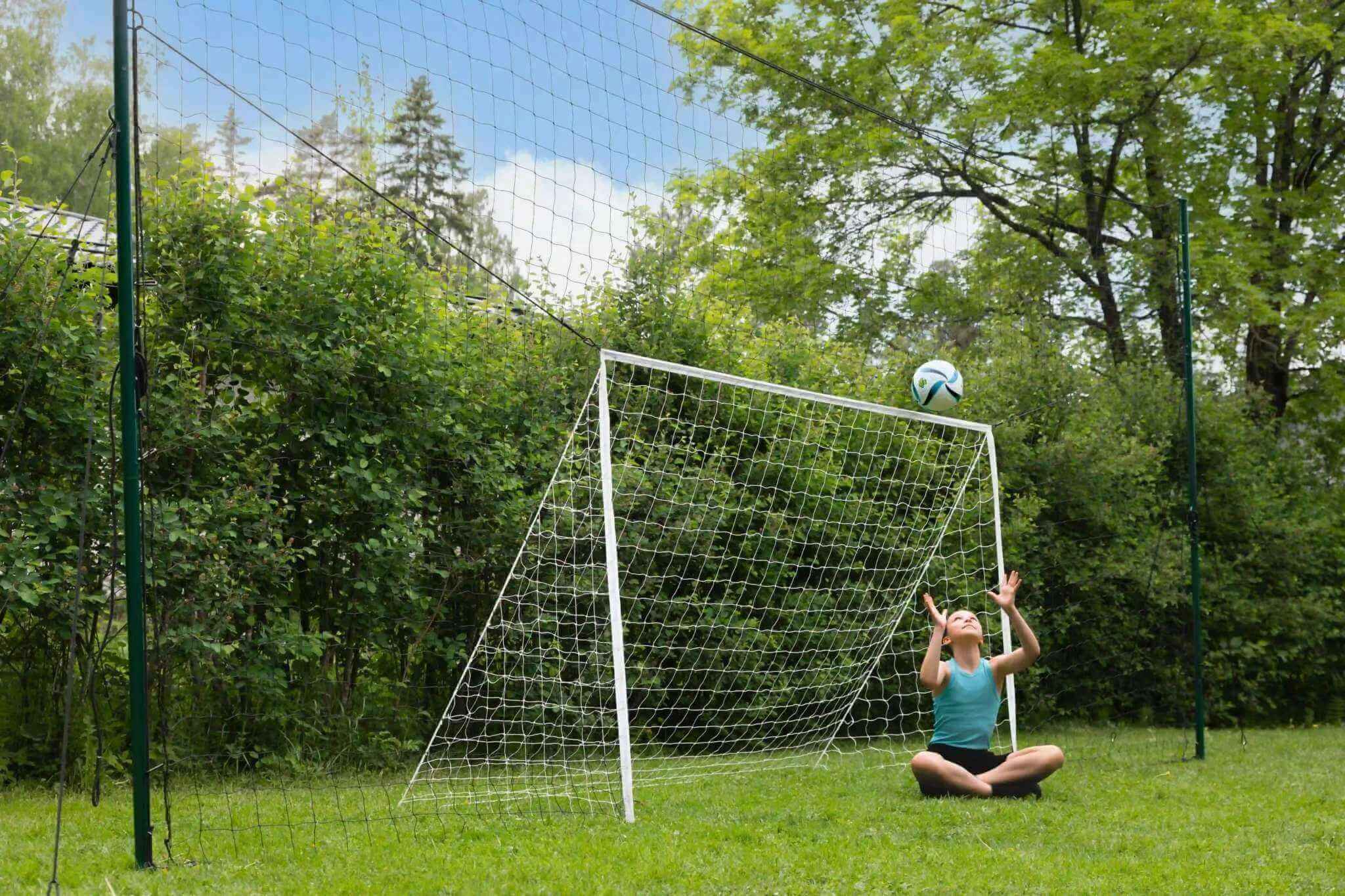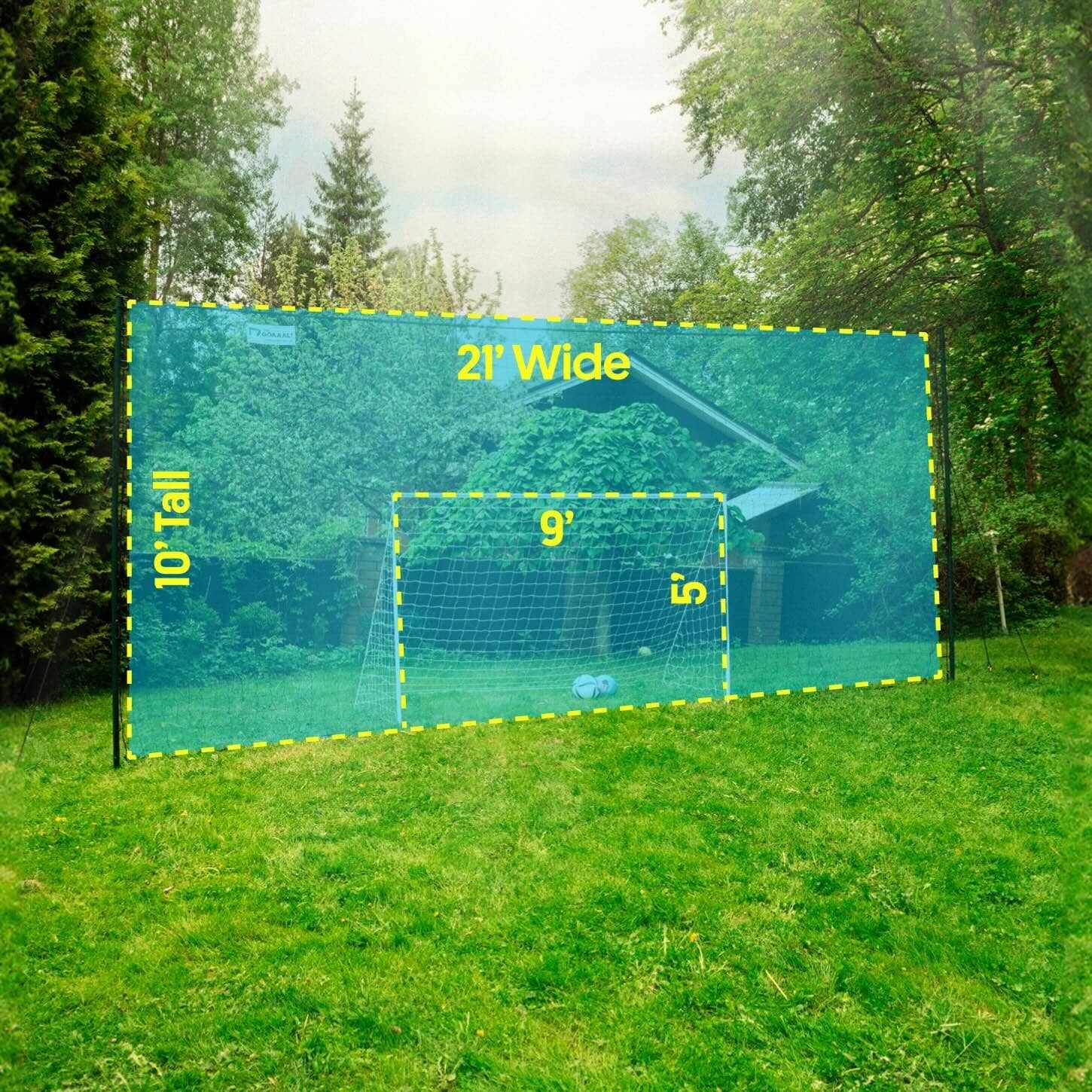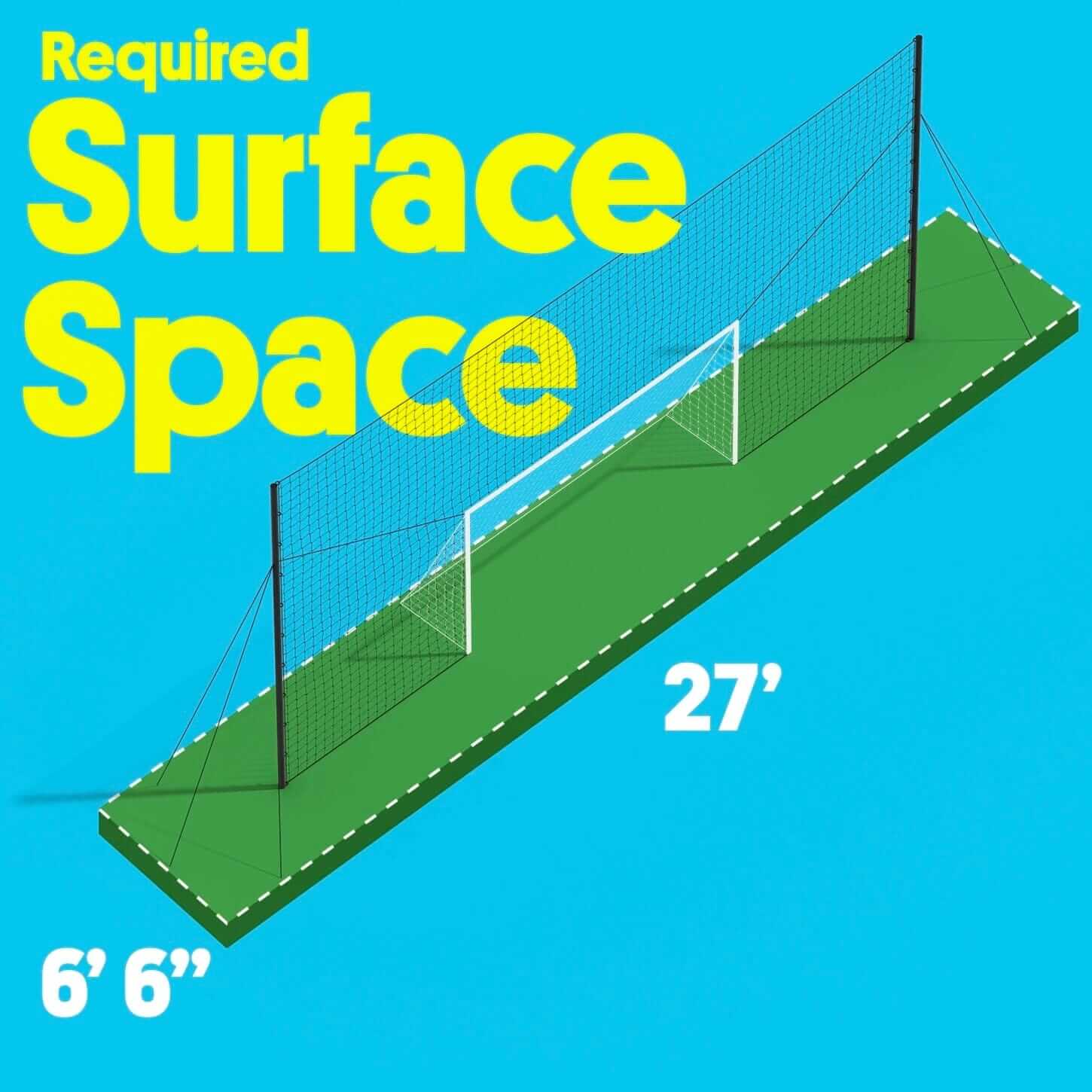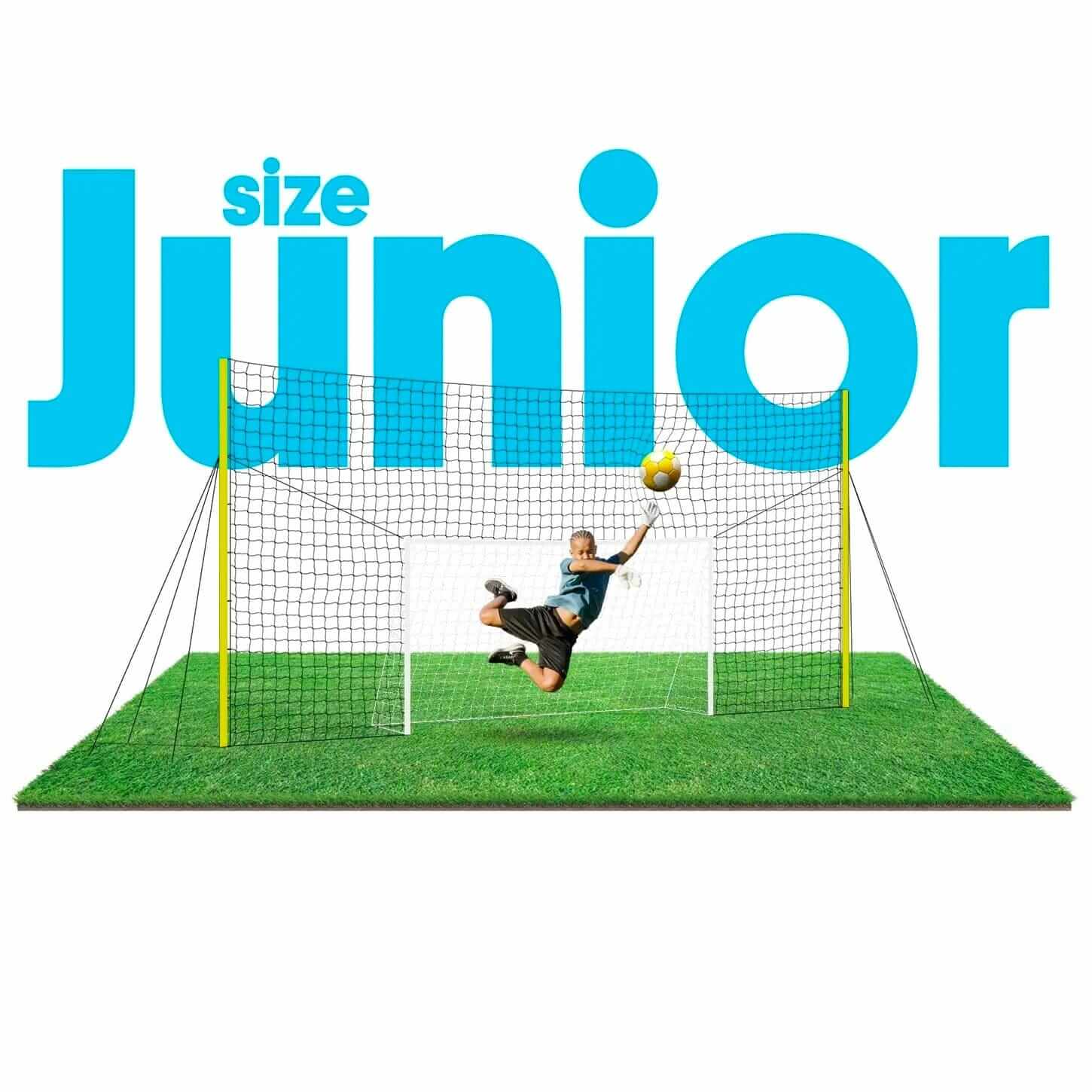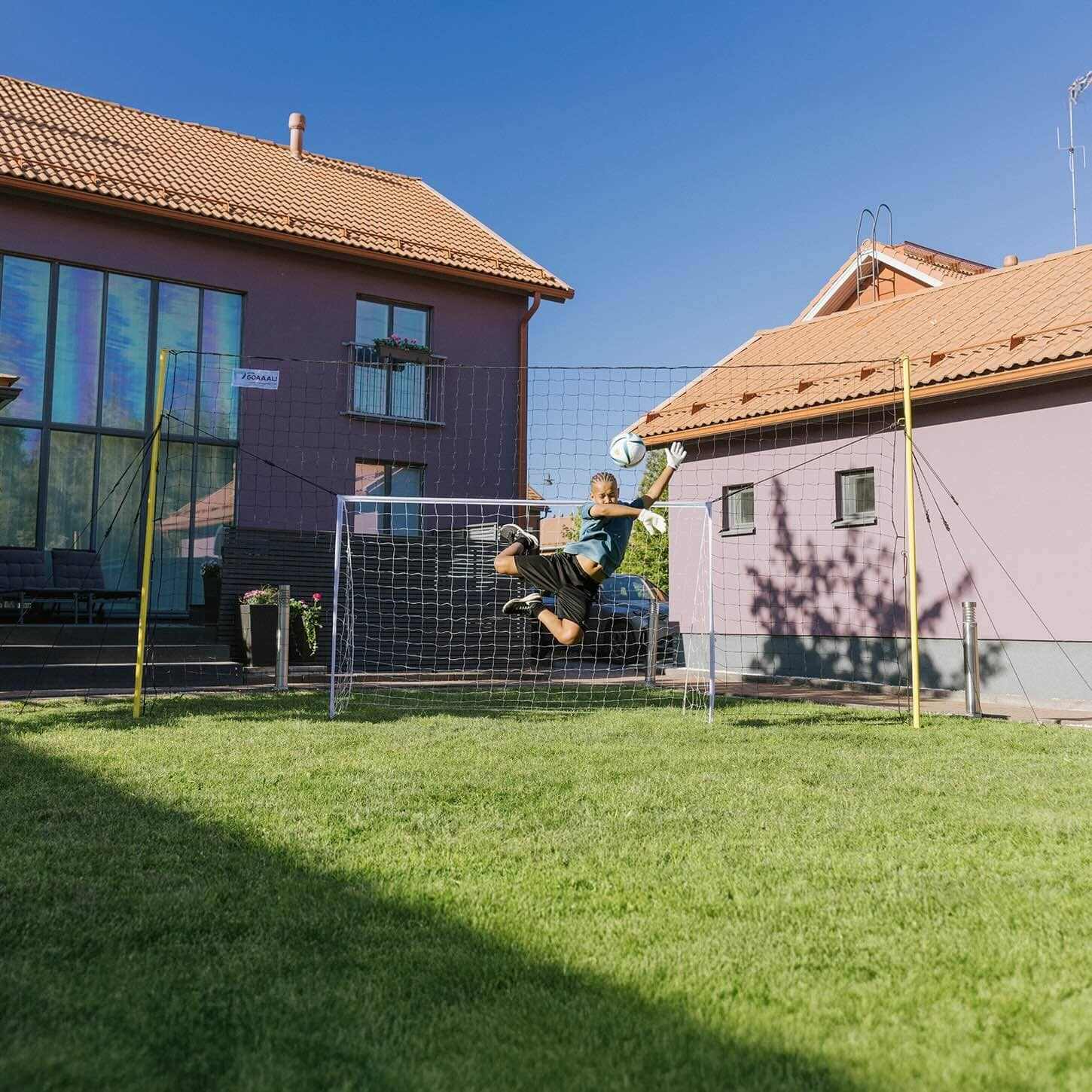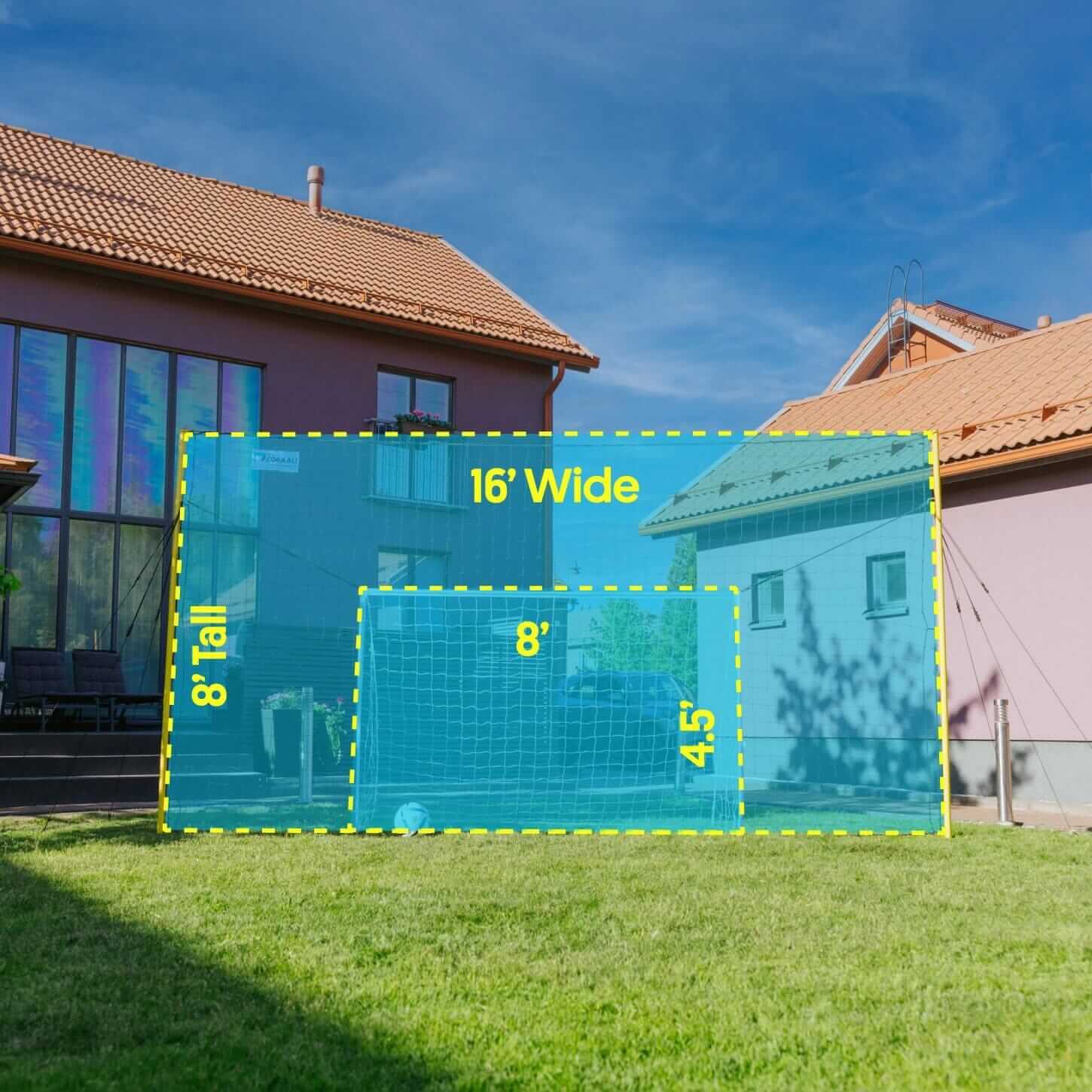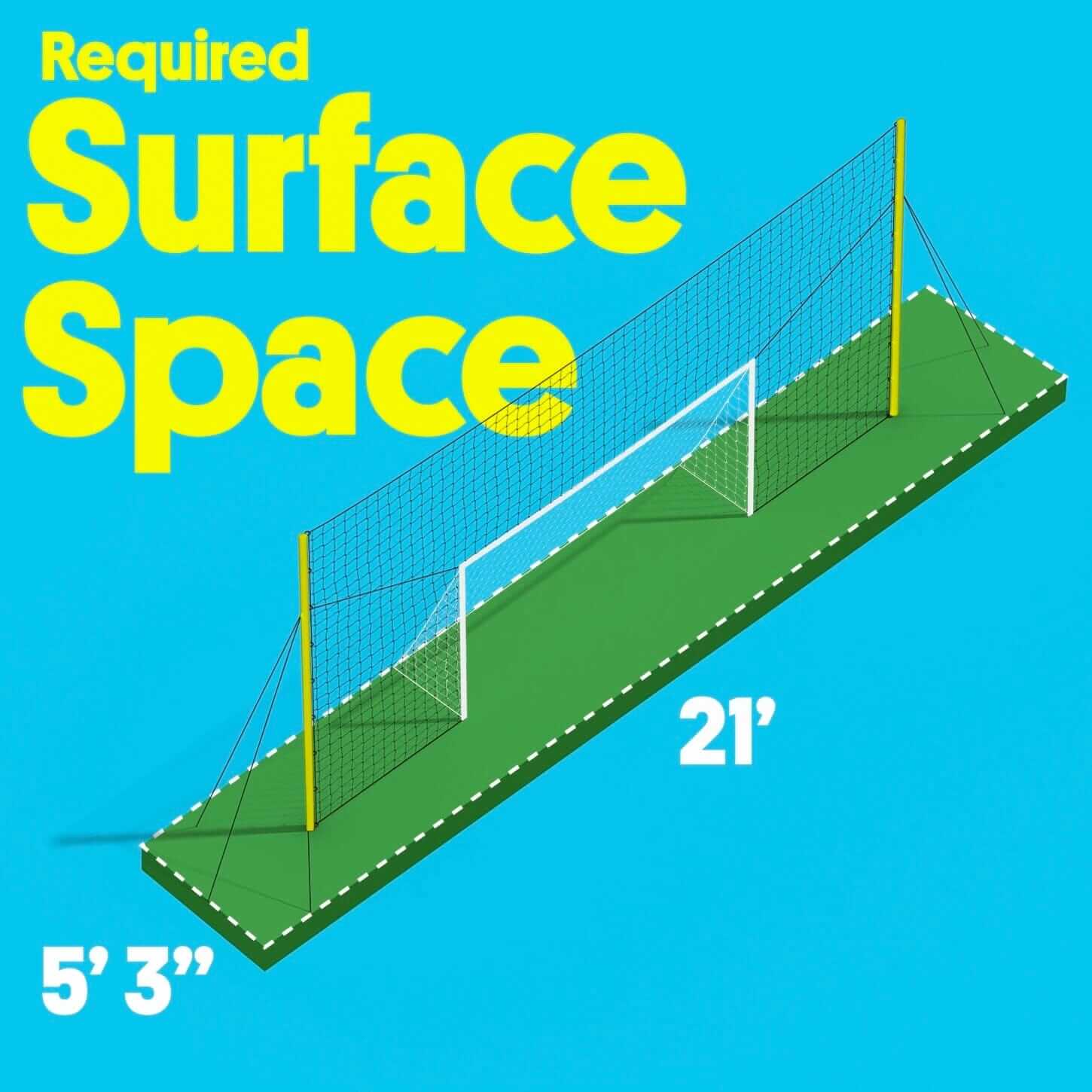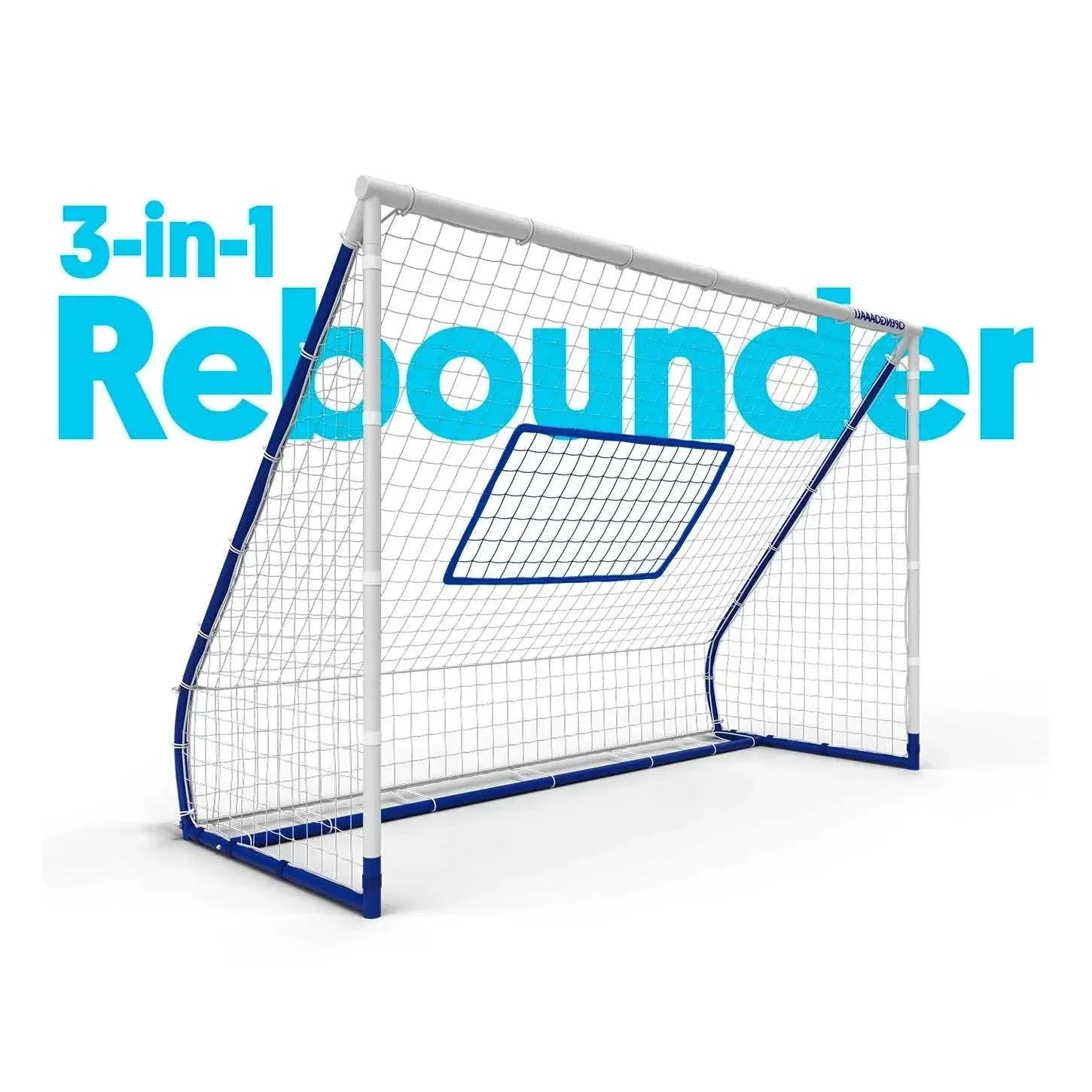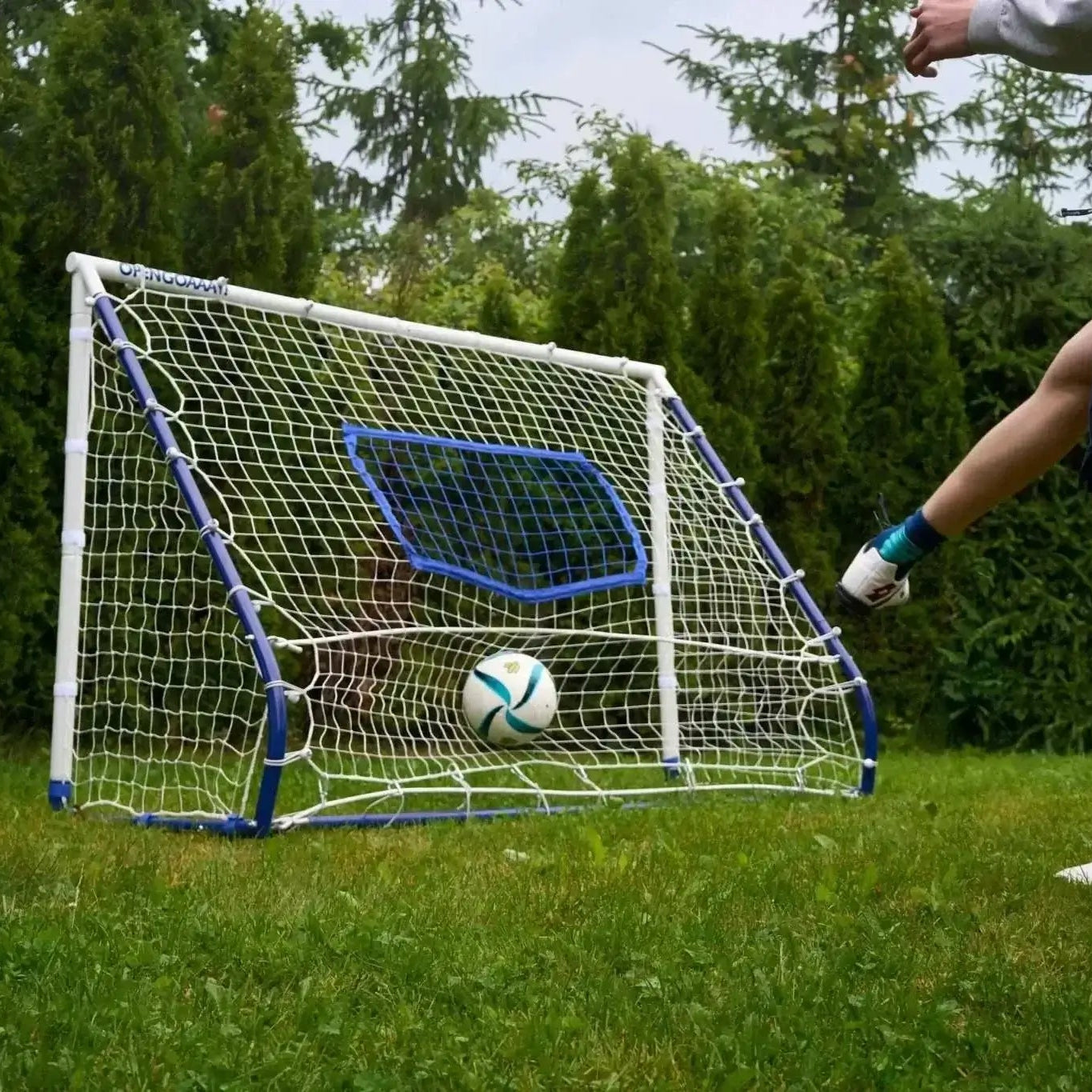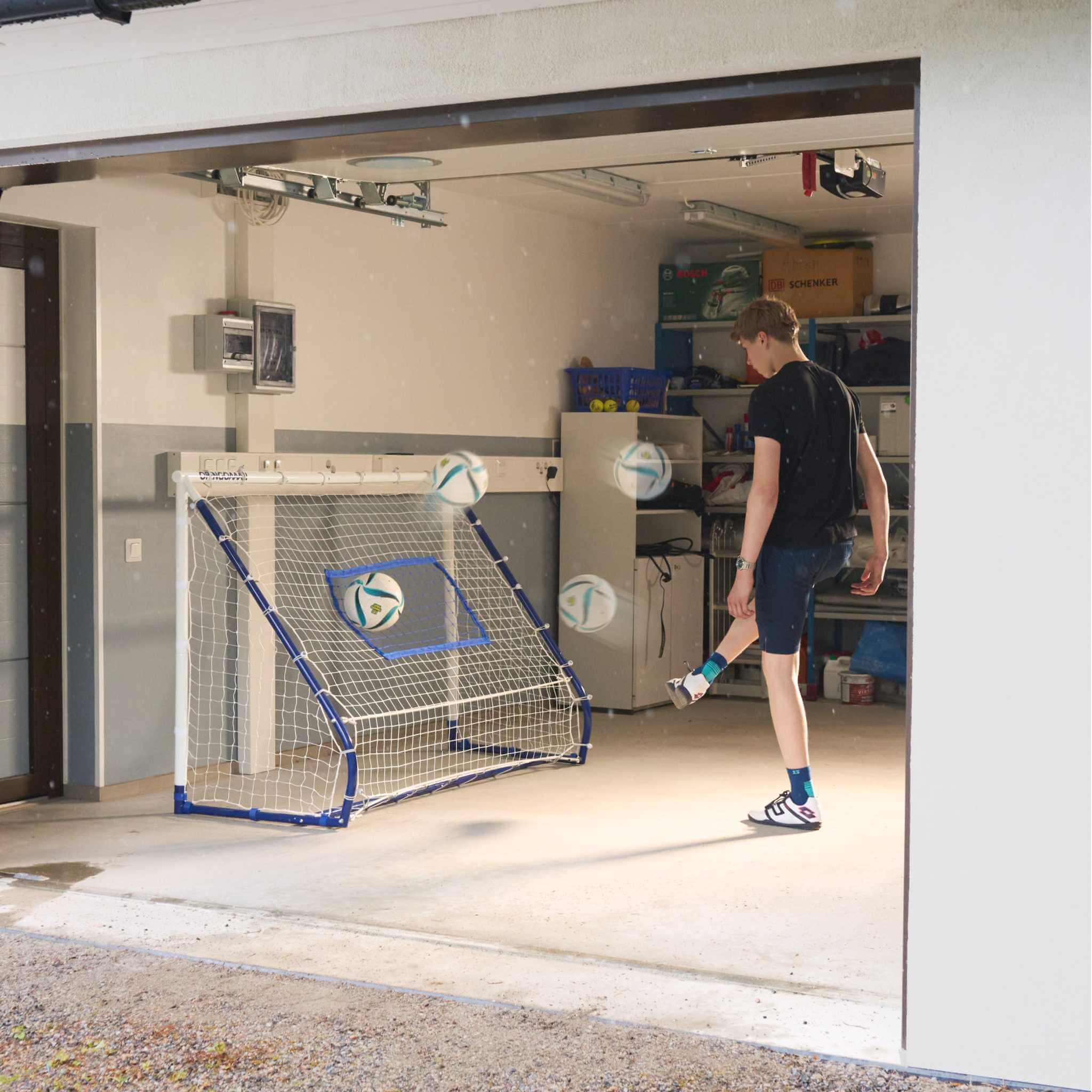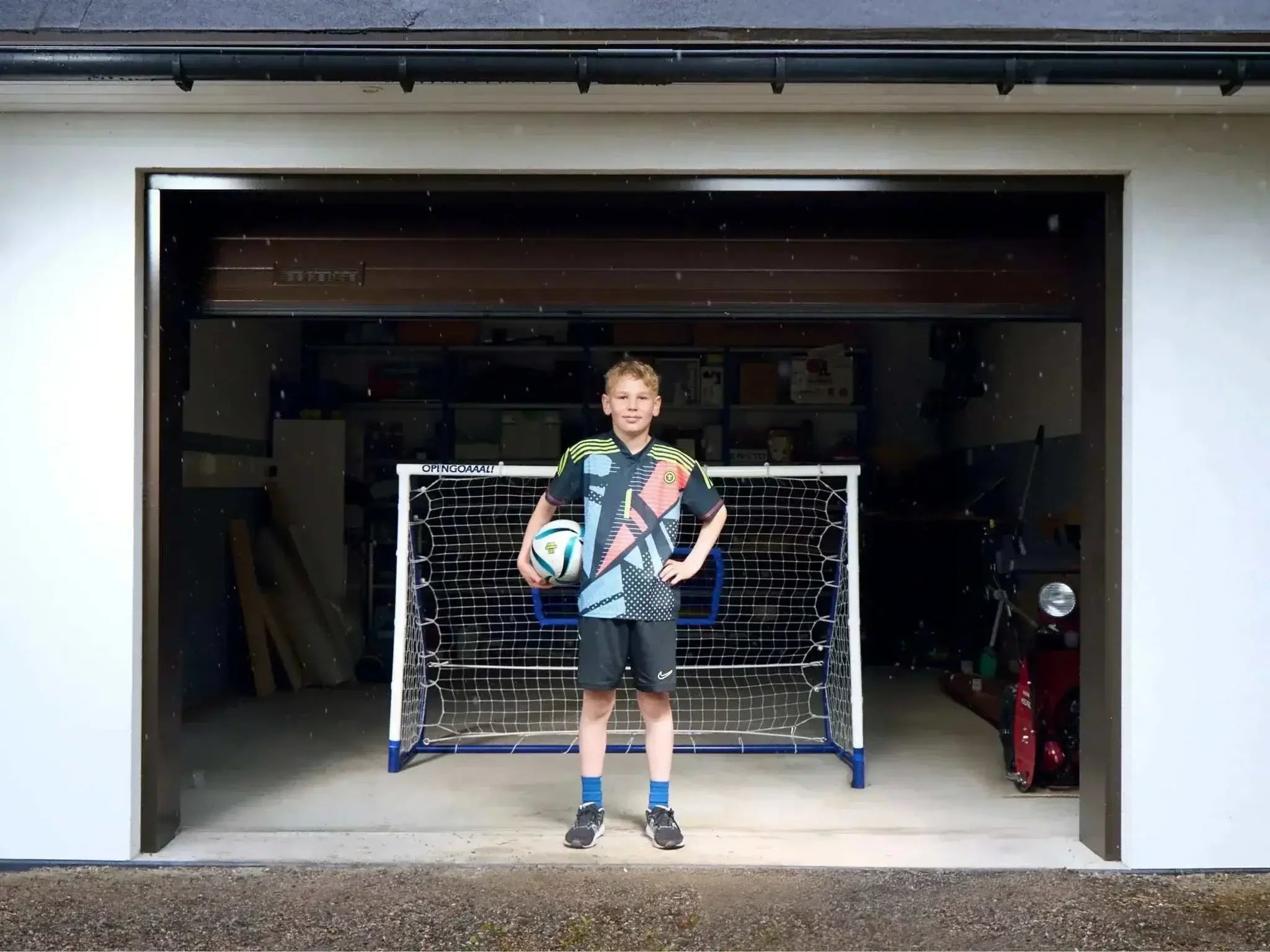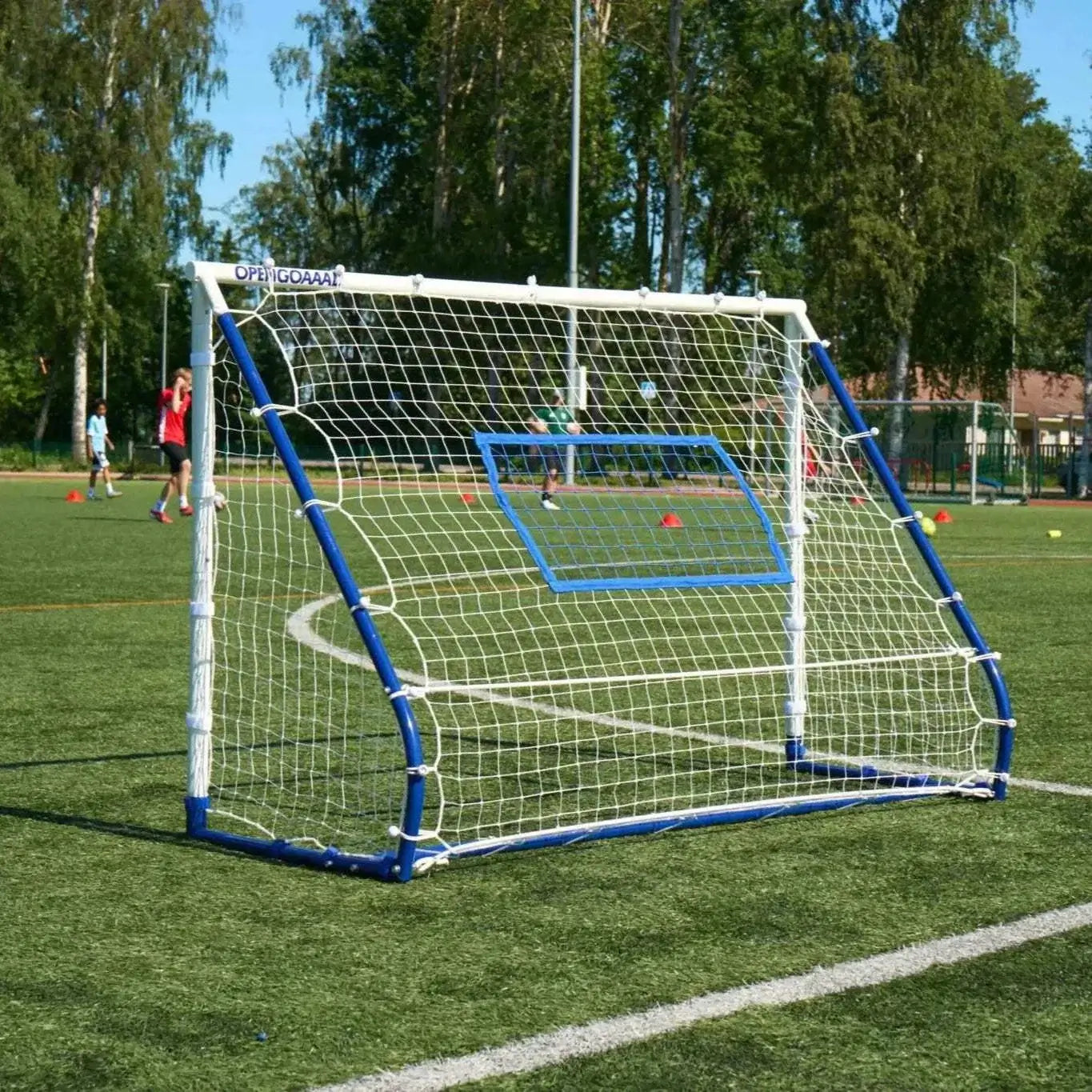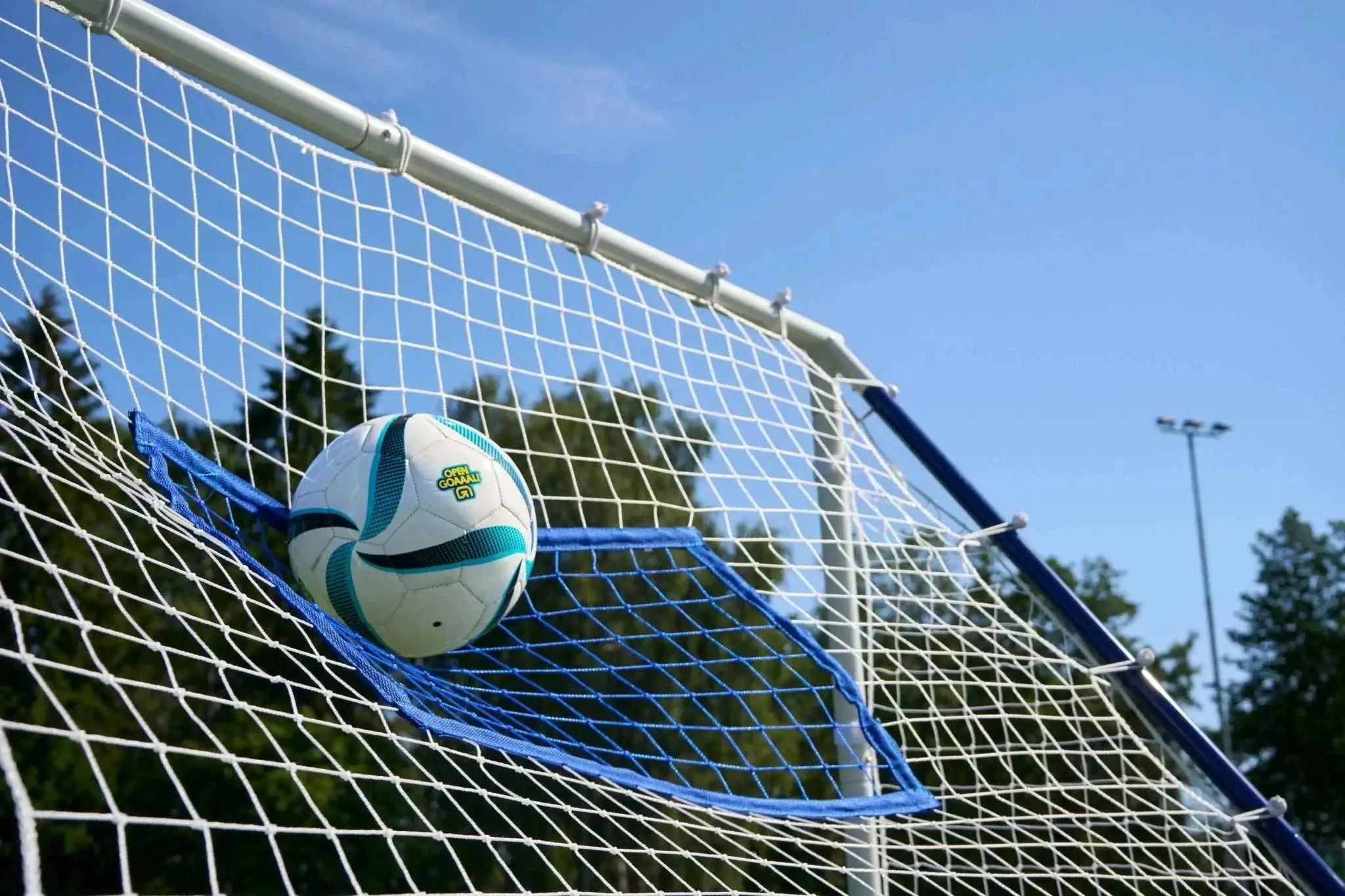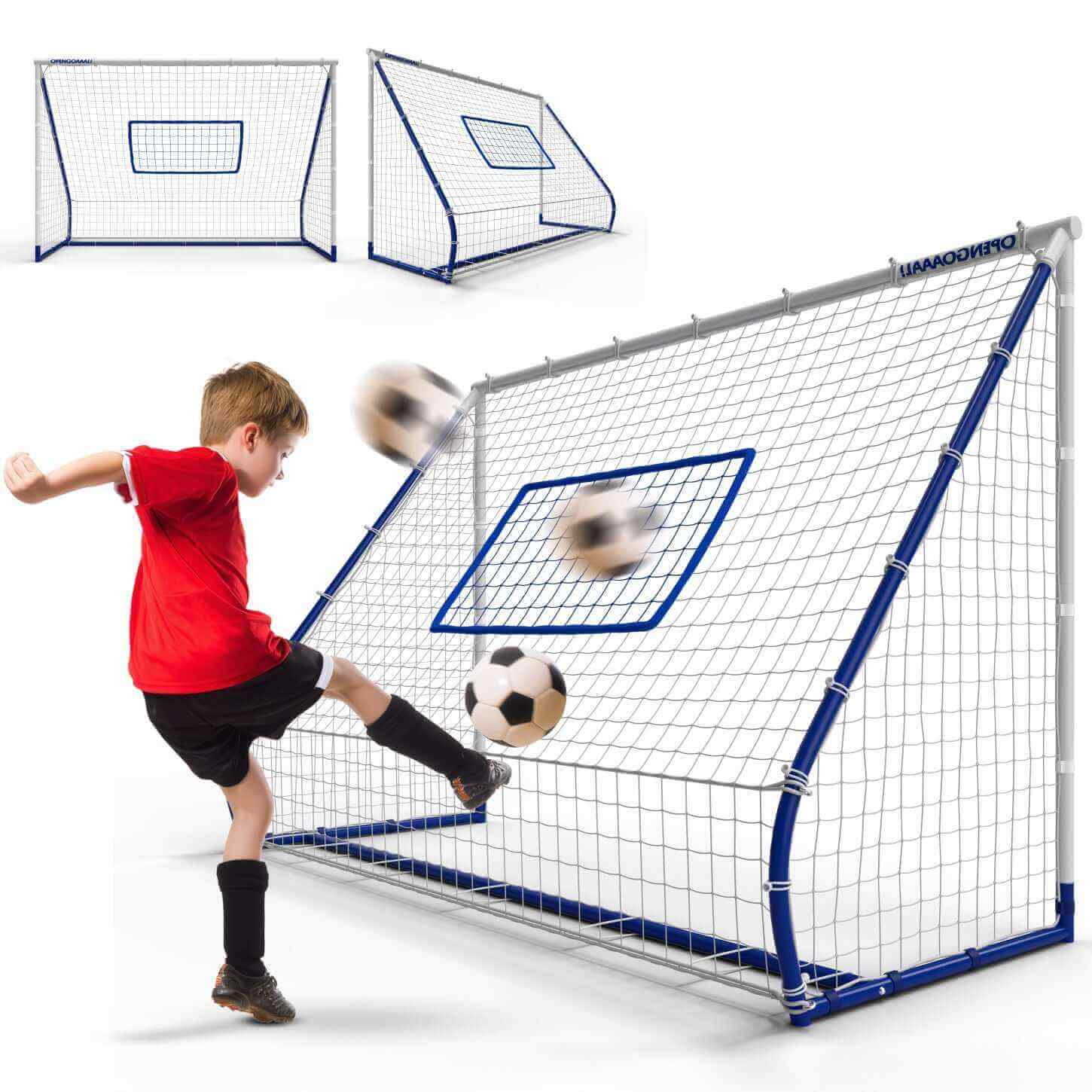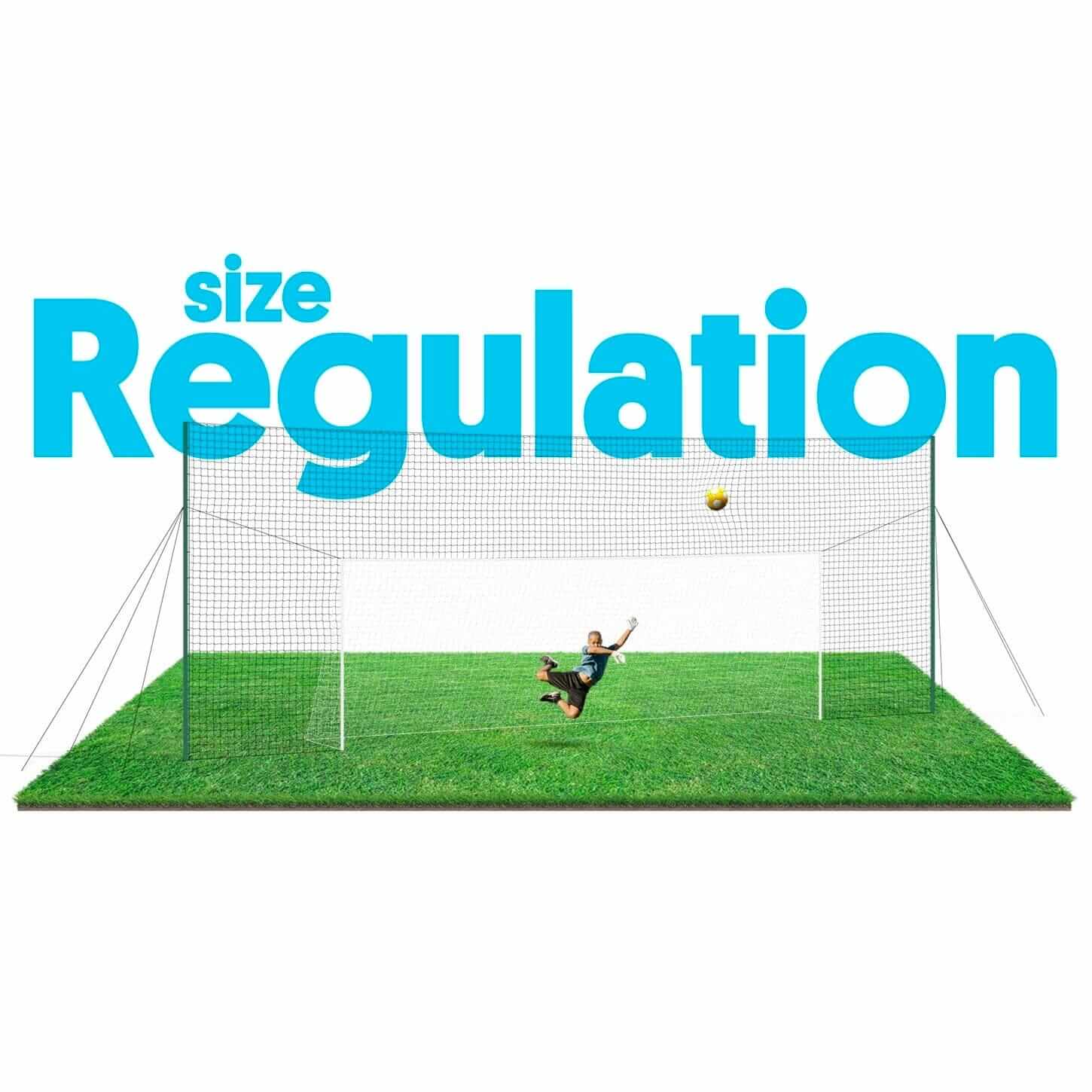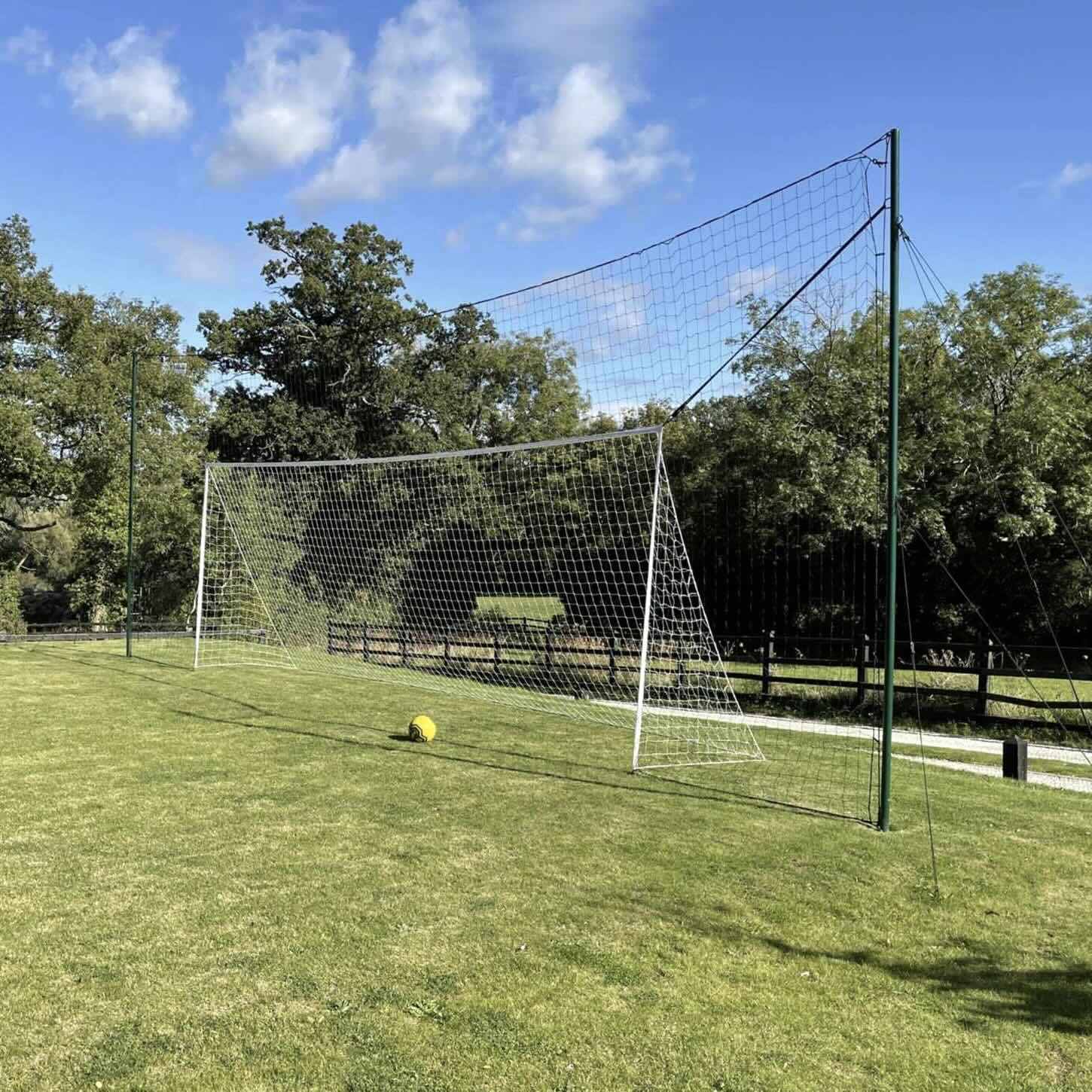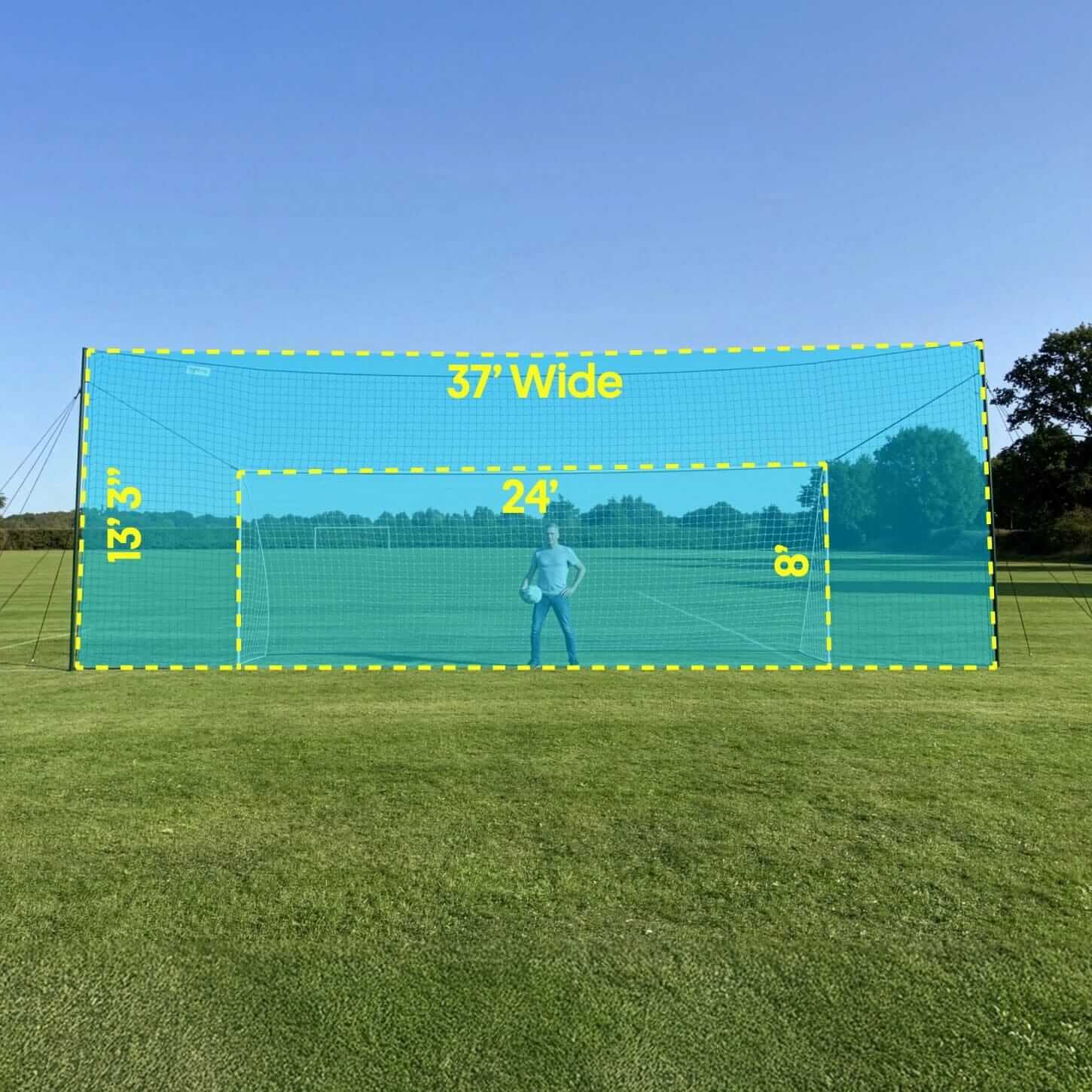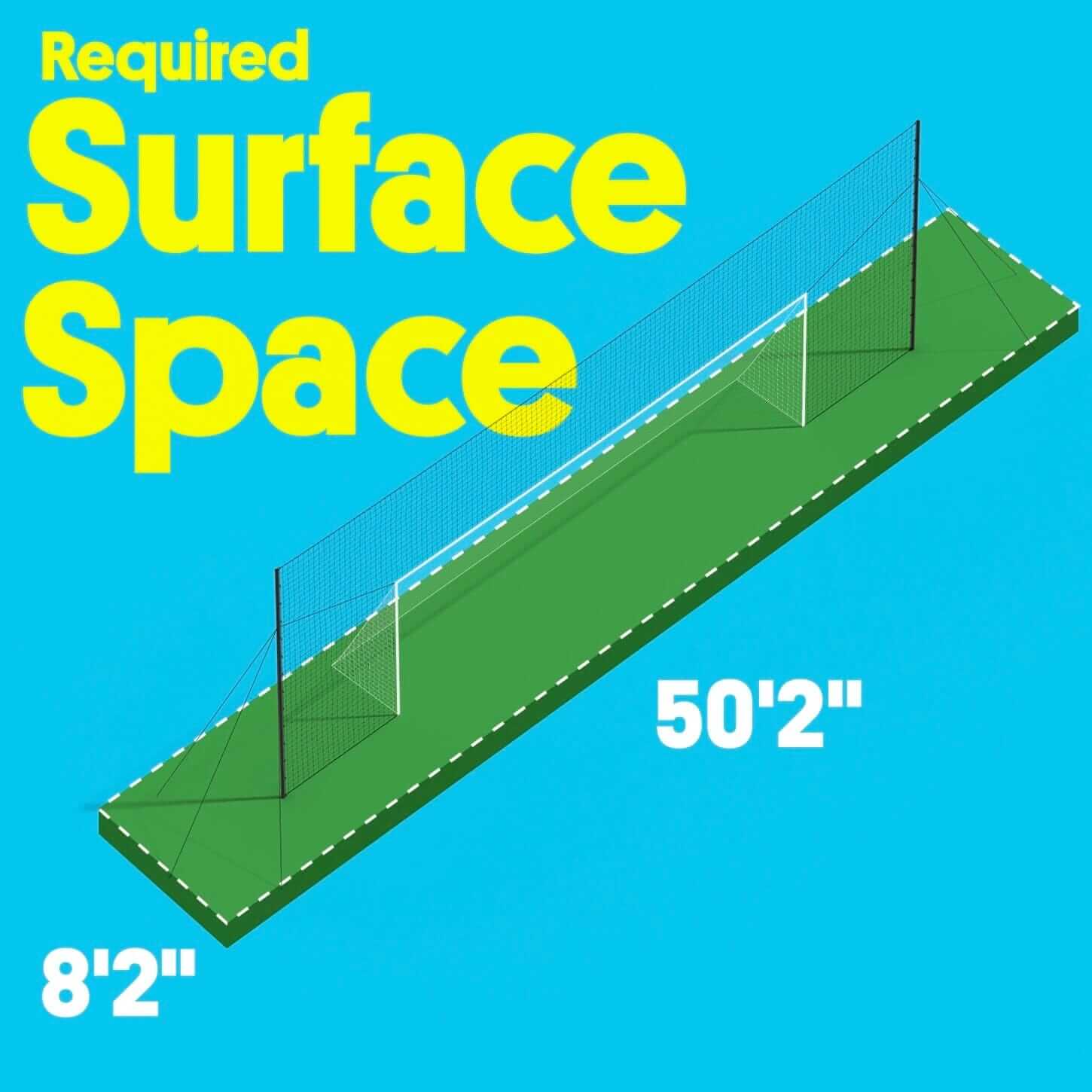Rebounders have become a popular training option for those soccer players who do not have the chance to train with other people regularly, or who want to improve specific skills or techniques. They allow for intense practice sessions – no more time is spent chasing balls that have gone astray, so players can devote more time to improving the weaker parts of their game.
By definition, a rebounder “rebounds” – that means that the ball travels back to the player who kicked or headed it in the first place. However, because, in a real-life match situation, a player rarely receives a ball from a teammate that reaches them correctly, the best rebounders reflect this by offering variable bounce and pace.
Many of the cheaper types of rebounder are multi-purpose in that they can be used for a variety of sports, such as lacrosse, baseball, and basketball. However, they tend to use cheaper materials and are not as suitable for soccer practice, as those who have been specially designed with the demands of the game in mind.
Rebounders can be used to improve a variety of soccer skills such as strengthening a weaker foot, improving all-round agility and reaction times, or the accuracy of throw-ins and headers. And, combining drills on a rebounder with an appropriate fitness regime, even an average player can enhance their game and contribution to the soccer field.
While rebounders have many advantages for soccer players, arguably the three most important techniques that they help to hone our first touch, passing and shooting.
First Touch
The first touch in soccer is one of the essential skills to master, and yet, at the same time, it is one of the most difficult to learn. The quicker and more assured your first touch, the more time and space that you are going to have on the ball. Players who have an excellent first touch make things happen on a field because they are making the ball do the work for them.
Like many skills, the key to an excellent first touch is practice make perfect. The hours spent on the training ground or a backyard can make all the difference later in a real match situation.
Using a rebounder, players can begin with simple exercises where they learn how to trap a ball and control it when they are stationary. Once they are comfortable with that, then they should begin repeating the same drills, but this time learning to control it when they are on the move, with both feet, and also at variable angles and heights.
Initially, a player will find that they need to keep their eye on the ball all the time when practicing these moves. However, as they get confident and more assured, they should begin to look up to anticipate the next pass or shooting opportunity, as they would on a playing field.
A soccer ball can be controlled not only with the feet. Players should learn to use their thighs, stomach, chest, and head to enhance their first touch; however, they receive the ball. And it is a good idea to try experimenting with different sized balls, as this can help with the development of this crucial skill.
Try to make sure that you use a rebounder that provides variable bounce and speed. This not only helps enhance your first touch but is much closer to the type of experience you will encounter in a real match situation.
Passing
With a rebounder, a player can learn to develop a range of passing techniques and methods. For example, using the inside of the foot, they can learn to push the ball forward and to deliver a short, accurate pass. Alternatively, if they want to provide a long shot to a teammate, then the instep is usually preferable, as it delivers more power, while the non-kicking foot needs to be planted to provide stability and balance. And then to lift the ball over defense, the chip pass is usually the preferred option, where the ability to elevate the ball is critical.
Meanwhile, the outside of the foot can be used for short, flicked passes which can wrong-foot an opponent by sending the ball in a different direction to what they expected.
Rebounders also allow players to work on their timing, power, and precision. A player should practice hitting balls at different speeds and force, so they develop their range of passing skills. And not all passes are made along the ground – learning how to pass accurately also on the volley, and half-volley often is the difference between a good player and an outstanding one.
Passing is not always about forwarding movement either. Many passes are either backward or square to another player, so this should also be practiced with the rebounder.
Shooting
Soccer is a low scoring game, which means that a premium is placed on being able to shoot accurately. There is a reason that most of the world’s most prized footballers are forwards, and that is because scoring goals is much harder than it looks! While the ideal situation is to practice your shooting against a real-life goalkeeper, this is not always possible, so using a rebounder is an attractive alternative.
One significant advantage about practicing with a rebounder is that you do not have to worry about fetching the ball after taking a shot, something that can be very time consuming if practicing by yourself. Instead, you can use the time saved by taking more shots and learning how to hit the target regularly.
It is crucial when choosing a rebounder that it can cope with the hardest of shots. One that fails to stand up to regular shots hitting the net or frame of the goal is of little use. It is also worth bearing in mind that some are not designed for shooting practice at all, but for honing other skills. They tend to be much smaller in size than a regulation goal, and it can be challenging to hit the target unless a player is very accurate.


